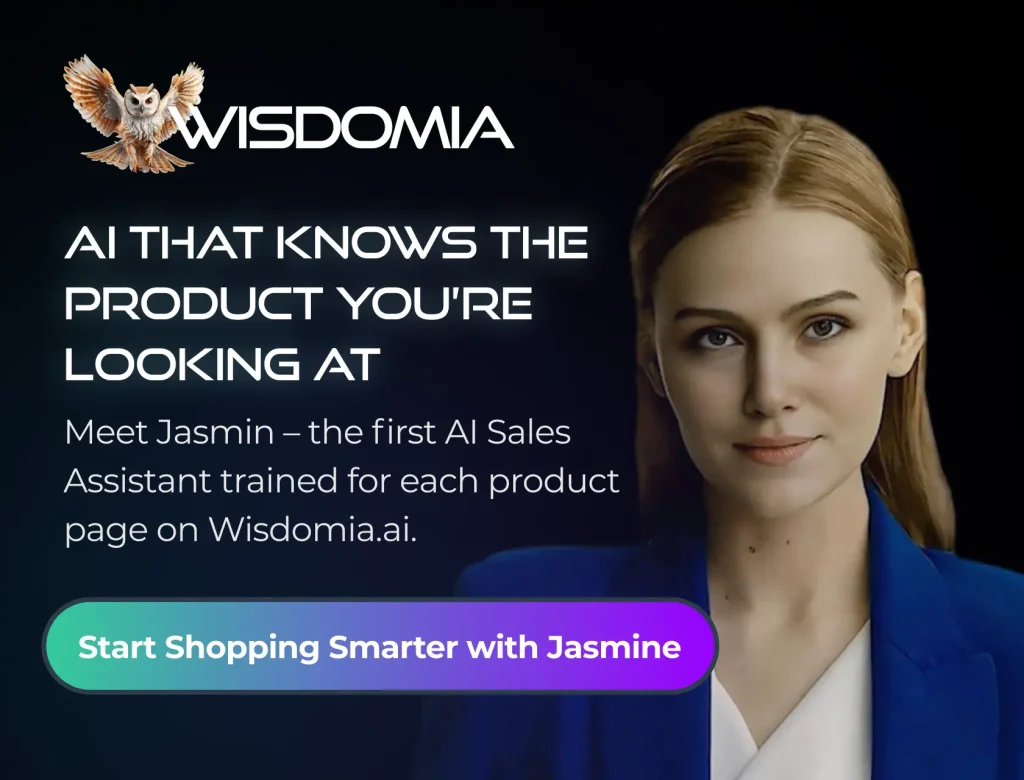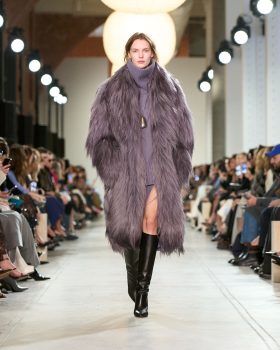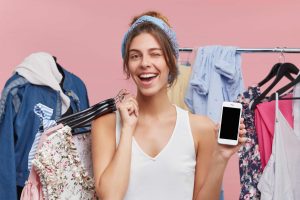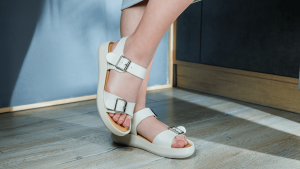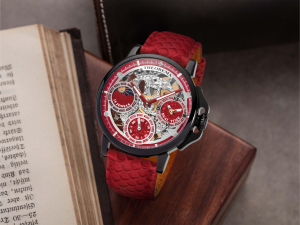Forget booking expensive fashion models or coordinating a photoshoot—fashion’s new faces aren’t real. Be it Creatify that raised $15.5 million in Series A funding or design-driven AI marketing agency Seraphinne Vallora, AI-driven platforms are providing digital models at the click of a button.
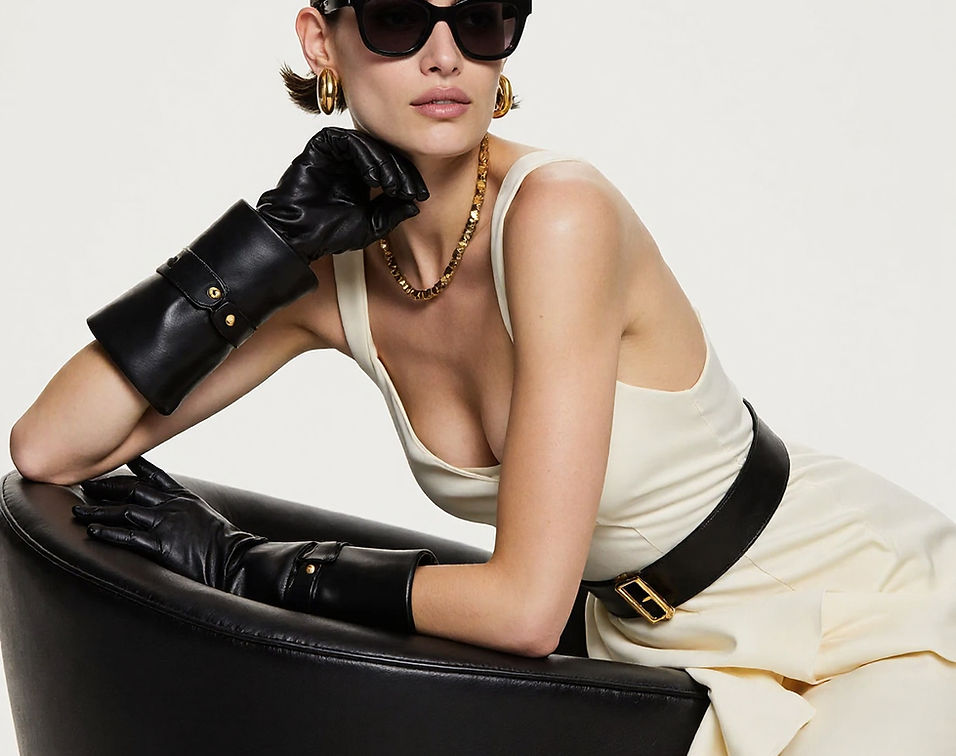
The fashion industry, driven by speed, personalisation, and visual impact, increasingly relies on AI apps to meet consumer demands. Traditional photoshoots and model bookings are expensive, time-consuming, and inflexible, particularly for e-commerce platforms requiring thousands of product images. AI-powered fashion apps solve these challenges with fast content generation, virtual try-ons, and automated styling, helping brands scale content while reducing costs and carbon footprint. As fashion becomes digital-first, the demand for tech-driven solutions has made AI a force in democratising fashion representation and accelerating timelines.
Initially focused on inventory prediction or trend forecasting, AI fashion apps have evolved into sophisticated tools capable of generating hyper-realistic digital fashion models. Leveraging advancements in generative adversarial networks, diffusion models, and 3D rendering, these platforms enable fashion brands to create customisable virtual models that represent diverse body types, ethnicities, and aesthetics on-demand. What began as algorithmic styling assistants or AR-based try-on apps has grown into a new wave of platforms—like Better Studio, Deep Agency, and RunwayML—that generate photorealistic models used in campaigns, catalogs, and social content.
These innovations allow inclusivity at scale, creative flexibility, and consistent brand visuals—powered by AI. Here are the top platforms leading the charge of creating AI fashion models:
Seraphinne Vallora
Seraphinne Vallora is a design-driven AI marketing agency that uses advanced AI to design photorealistic images and cinematic video campaigns that feel immersive, editorial, and emotionally resonant. Seraphinne Vallora specialises in tailored AI-driven marketing campaigns that attract viewers and drive engagement. Their AI visuals are designed to be hyper-realistic, high-quality, in theme with each brand’s identity.
Creating ‘AI Models’ is at the core of Seraphinne Vallora. The team works collaboratively with their clients to develop unique AI models that reflect their brand’s identity and their vision for the campaign. They also create a hyper-realistic avatar, ready to be the star of any campaign, anywhere in the world.
Co-founders Valentina and Andrea have a background in design, fine art, photography, and digital media. “We want to harness the incredible power of AI to revolutionize marketing images. We realised that AI offered a hassle-free path to design brilliance. No more expensive travel or complicated arrangements. We wanted to make campaigns accessible to companies of all sizes. An easy solution to market their products without logistical stress”, per the official website.
DeepFashion AI Marketplace
DeepFashion AI Marketplace is designed for fashion brands looking to create high-quality, AI-generated model imagery at scale. By offering an alternative to traditional fashion photography, it helps brands cut down on photoshoot expenses while maintaining top-notch visual standards. This approach also opens the door to extensive customization.
Standout features include its ability to create AI-generated digital twins of models. H&M and Levi Strauss & Co. have already embraced this approach for their advertising and marketing efforts. The platform allows users to tweak facial features, body types, and poses to craft model representations.
DeepFashion AI Marketplace offers four subscription plans. The Starter Plan offers 600 high-definition images with commercial rights. The Premium Plan provides 3,000 images monthly and advanced AI training. Larger companies can opt for the Enterprise Plan, which includes dedicated GPU resources and tailored onboarding to ensure smooth operations during high-volume production.
DeepFashion AI Marketplace supports integration with e-commerce platforms and content management systems through API access. It includes batch processing, enabling efficient management of large inventories. For instance, Mango utilized AI-generated avatars in July 2024 to promote a limited-edition collection for teenage girls.
BetterStudio
BetterStudio is an AI-driven platform designed to create consistent, high-quality product images with real and AI models, at a fraction of the time and cost. By combining AI-generated models with influencer collaborations, it offers fashion brands a way to create high-quality content at scale without compromising on professionalism. Standout features include turning flatlay images into lifelike model shots, replacing models in photographs effortlessly, and transforming mannequins into models.
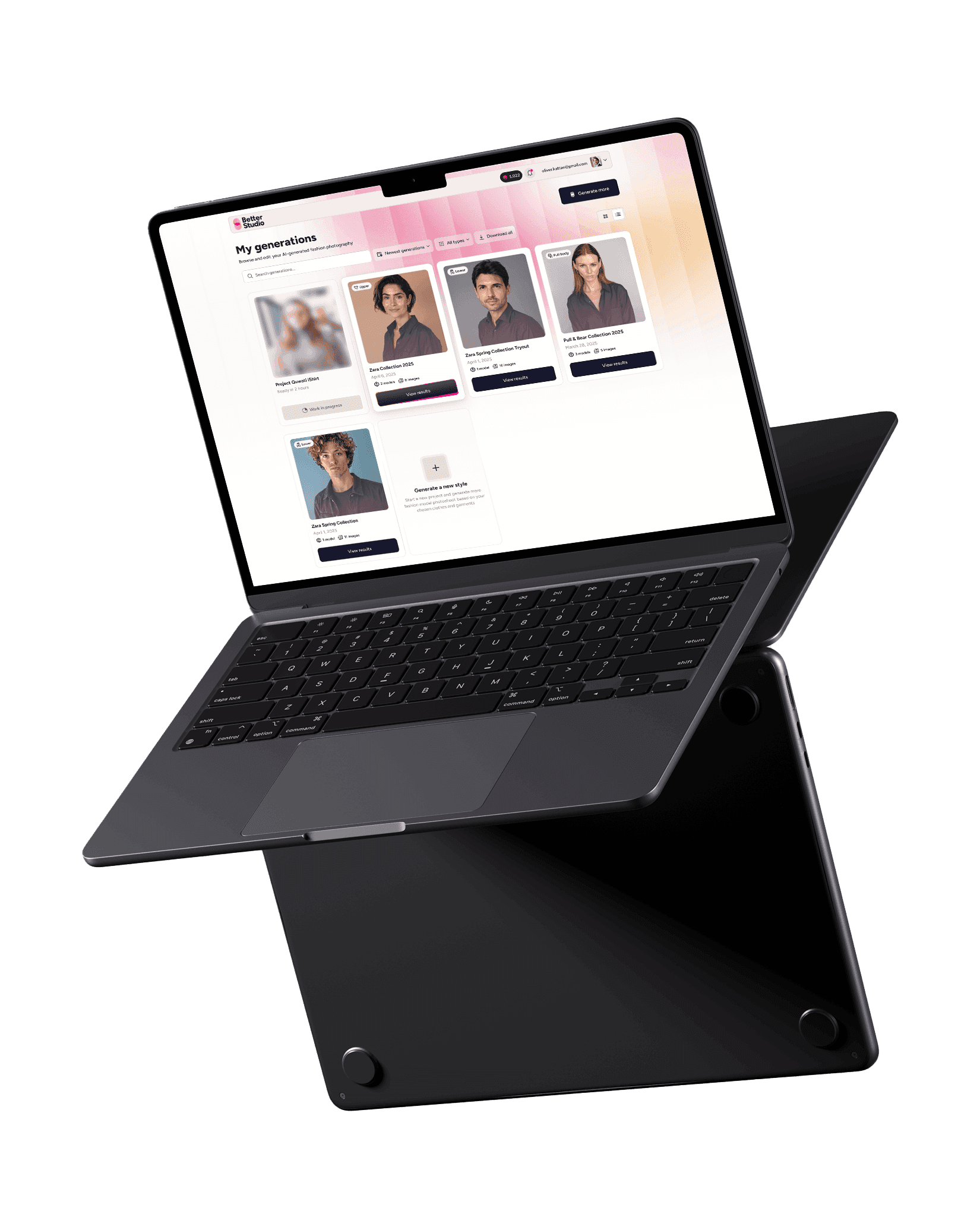
“BetterStudio has revolutionised how we present our fashion clothing online. Our clients’ conversion rates have soared!” — Dan Nistor, CEO Vevol Media, Shopify Partner
This hybrid approach allows fashion brands to mix AI-generated content with influencer imagery, giving them the flexibility to balance cost-effective production with authentic visuals. Plans start free, with Pro options at $35/month. Pro users enjoy discounts on additional credit purchases.
BetterStudio allows e-commerce brands to generate model photography for new product launches, ensuring a consistent visual style across their catalogues. Flatlay-to-Model feature is useful for maintaining brand cohesion with customisable backgrounds in seasonal campaigns and Real Influencer Collaborations bridges the gap between AI-generated visuals and authentic human representation.
Lalaland
With a tagline—inspired by real people, generated with AI—the software platform integrates with Browzwear VStitcher, enabling fashion designers to showcase their 3D designs onto the generative AI-models, with a range of customization options. Users can customise individual avatars, from hair style to body shape and skin colour. They can also select poses, emotions, and other features to enhance the overall image.
Founded by two entrepreneurs driven by an urge to see more representation in the fashion industry, Lalaland digitises the design and sales process. Per the official website: ‘We’re not afraid to disrupt and ignite change in a traditional environment. Forward thinking has always been a part of our core and we see the future is ready for these changes, so we’re ready to lead them.’
Users can reduce the need for physical samples and embrace more sustainable practices. They also save time by eliminating the need for photoshoots; simply choose from pre-existing digital avatars and upload the designs instantly so it can reach the market. The mission is to digitally represent humanity for digital designers, fashion retailers or innovation managers.
Runway ML
Runway ML’s text-to-image feature transforms simple prompts into diverse, high-quality visuals, ensuring a unified visual style across product lines. The platform includes video editing tools. This combination helps brands create cohesive campaigns by combining AI-generated visuals with traditional footage. Whether for seasonal look-books or social media content, the platform supports both static imagery and dynamic video.
Runway ML uses a credit-based pricing model, catering to businesses of all sizes and production needs. For businesses using the Gen-4 Image API, each generated image costs $0.08. Runway ML’s API makes it easy for brands to integrate AI-generated imagery into their existing systems. Whether it’s an e-commerce platform, content management system or internal design tools, the platform’s integration simplifies workflow.
Runway ML is effective for generating product imagery that can be adapted to different contexts without the need for photoshoots. This capability helps brands craft consistent visual narratives for seasonal campaigns, social media updates, and e-commerce listings. The platform’s video tools allow fashion teams to create promotional materials that merge AI-generated visuals with video content. This approach makes it possible to produce high-quality marketing assets quickly, saving time and resources.
Vue.ai
Vue.ai’s model customization tools let fashion brands create product visuals without photoshoots. Brands can choose specific model types and visualize their products on models of various sizes. This functionality promotes inclusivity and helps brands connect with a broader audience. Vue.ai can also generate product images in any color from a single original photo and even overlay prints on garments. Its AI systems are trained to replicate garment details and accurately portray how clothing fits on a person, taking into account differences in posture and height.
Vue.ai doesn’t disclose its pricing, requiring brands to reach out for tailored quotes. However, its scalability is well-proven, with over 150 retailers including Diesel and Levis relying on its solutions. The platform claims to reduce photoshoot costs by 75% and deliver results five times faster than traditional methods. Australian retailer Showpo leveraged Vue.ai to create an inclusive campaign highlighting diversity. Similarly, Lane Crawford, an Asian designer retail company, saw a 33% increase in return on ad spending, 55% higher click-through and a 28% reduction in cost per action after adopting Vue.ai’s technology.
ZMO.ai
ZMO.ai provides customization for creating diverse model imagery. Brands can fine-tune body shapes, facial features, backgrounds, and ethnicities. Users can upload a portrait and replace the model’s face with another. Background customization is another standout feature. Additionally, ZMO.ai allows adjustments based on garment SKUs and styles. These capabilities have helped brands cut model photography costs.
All paid plans include model customization and allow unused credits to roll over, ensuring users get value. Annual plans come with savings ranging from 17% to 25%, making it easier for brands to scale their content production while managing budgets efficiently.The platform is developing API tools for bulk content generation, making it easier for businesses to incorporate ZMO.ai into their e-commerce workflows.
Creatify
Founded by Yinan Na, Ledell Wu and Xin Zhou, Certify designs AI digital humans — virtual beings created through a combination of AI, computer graphics, and other technologies, simulating human forms and behaviours through images, voice, videos, and text to create virtual humans that are indistinguishable from real people. The platform offers a generative AI person creation technology; what users envision, it brings to life with a prompt. From eye colour to accessories, the platform takes customisation to the next level!
Certify’s custom AI avatars are designed by the user. Whether someone wants to be the face of their own brand or explore different looks, they have full creative control. Users can create a personalised digital twin to feature in advertising, or generate stylized realistic avatars representing different ages, genders, and ethnicities. With just a few prompts, anyone can produce high-quality AI-generated content tailored to their unique vision. The platform also provides a fast track to creating captivating video ads designed to engage the audience and win more customers.
Today 1.5 million people worldwide use Creatify to generate video ads. The platform crossed $9M in annual recurring revenue in eighteen months and raised $15.5 million in Series A funding, co-led by WndrCo and Kindred Ventures. “Great technology turns storytelling into real business results. Creatify represents the next leap forward. It’s not just making video ads easier to produce, it’s redefining how modern advertising works. In a world where brands must show up everywhere, all the time, Creatify is purpose-built to meet that demand at scale,” says Jeffrey Katzenberg, WndrCo.
HeyGen
HeyGen’s AI video generator converts simple text prompts or images into high-quality videos. The platform’s Video Agent will build the story, generate the voice, and handle the edit — from a single prompt. Whether it’s a TikTok ad, product demo, or voiceover-led explainer, simply upload the footage or describe the goal. Users can also create videos using the AI avatar generator. Whether the user clones themselves, picks a stock avatar, or designs one from scratch, each avatar is crafted with customisation.
The mission revolves around empowering individuals through accessible AI video generation. And the team believes that everyone should be able to express their creativity without the need for advanced equipment or unlimited resources to bring their ideas to life. “We did tests with other companies, and HeyGen’s AI video generator was always on top for quality. We communicated transparently, trusting their team throughout our high-risk, high-reward situation, and it entirely paid off,” says João Laureano, Creative Director, trivago.
Modelia.ai
Modelia generates hyper-realistic AI fashion models in any setting—from city streets to tropical getaways—without the need for photoshoots. By enabling scene selection and diverse model customisation, Modelia eliminates location scouting, travel costs, and reshoot delays. Fashion labels can now produce immersive, context-rich visuals that enhance customer engagement and drive conversions, all the while maintaining full creative control. This shift offers convenience, visual storytelling and brand positioning.
With Modelia, fashion brands cut costs and accelerate production timelines by replacing traditional photography with fast and scalable AI-generated images. Users can upload a single image of a garment, customise model features and backgrounds, and generate polished fashion visuals in seconds, for e-commerce listings, ads, or social campaigns.
The platform has been praised by boutiques and retailers for its quality, realism, and speed. From stitching-level garment detail to model diversity and fast content creation, Modelia empowers fashion companies to elevate their brand image while spending up to 90 percent less time on photography workflows.
Modelia also allows users to generate new visuals based on the data it gathers from their campaigns. Whether it’s targeting specific customer segments or experimenting with different styles, users can instantly create imagery for their audience. This flexible approach ensures that visuals are always relevant, fresh, and in line with the campaign goals.
Pic Copilot
Pic Copilot makes it effortless to create professional virtual try-on photographs using AI-generated fashion models. The process is simple: upload a photo of a clothing item—whether it’s a top, bottom, or one-piece—then select from a diverse range of AI models representing different genders, ethnicities, and body types.
With just a few clicks, the AI generates high-quality, realistic try-on images that are ready for use across e-commerce platforms, social media, or marketing campaigns. This streamlined approach replaces the need for costly photoshoots and manual model sourcing, making it ideal for fast-paced fashion brands.
Pic Copilot also offers a suite of AI tools for fashion retailers. Users can swap models in existing product photographs, turn static images into dynamic fashion reels, generate realistic shoe try-ons, and build custom AI avatars tailored to their brand’s audience.
Additional tools like AI backgrounds, shadow enhancements, watermark removal, and image upscaling further optimise product visuals for digital retail. Whether you’re managing a Shopify storefront or running large-scale campaigns on Amazon, Pic Copilot empowers brands to create studio-quality visuals at scale—quickly, affordably, and without technical expertise.
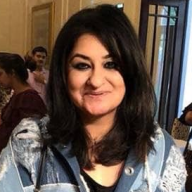
Jasmeen Dugal is Associate Editor at FashionABC, contributing her insights on fashion, technology, and sustainability. She brings with herself more than two decades of editorial experience, working for national newspapers and luxury magazines in India.
Jasmeen Dugal has worked with exchange4media as a senior writer contributing articles on the country’s advertising and marketing movements, and then with Condenast India as Net Editor where she helmed Vogue India’s official website in terms of design, layout and daily content. Besides this, she is also an entrepreneur running her own luxury portal, Explosivefashion, which highlights the latest in luxury fashion and hospitality.



